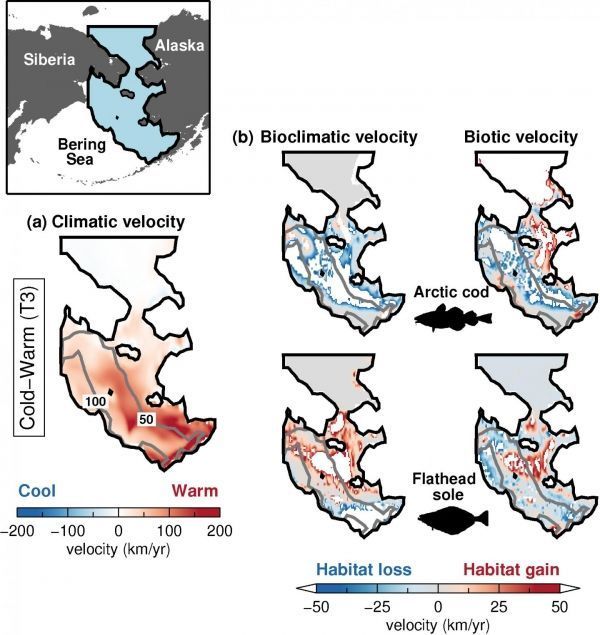The inclusion of taxon-specific sensitivity to a shifting climate helps us understand species distributional responses to changes in climate.
Marine species in the eastern Bering Sea are not shifting their distribution ranges fast enough to keep track of current changes in climate, according to a study led by researchers at Hokkaido University.
As global climate change alters sea temperatures and environmental conditions, marine species need to track these signals at a sufficient pace to remain within their climatic habitat. However, lags in distributional responses to temperature shifts have been documented in terrestrial and aquatic taxa, as species range dynamics are also influenced by factors other than climate.
Irene Alabia, a fisheries oceanographer at Hokkaido University’s Arctic Research Center, led a study to evaluate multi-taxa responses to contrasting climatic regimes in the eastern Bering Sea, defined by persistent stanzas of regional warming and cooling. She worked with colleagues at Hokkaido University and the University of Alaska Fairbanks to examine potential distributions of 21 fish and invertebrate species in the eastern Bering Sea between 1993 and 2016. These were generated from multi-ensemble habitat models correlating taxon-specific occurrences to suite of climatic (winter sea surface temperature) and environmental factors (winter sea ice cover and depth).
Read more at Hokkaido University
Image: (a) Rates of local climatic change, (b) expected (bioclimatic velocity) and observed (biotic velocity) distribution responses for the Arctic cod (cold-adapted species) and Flathead sole (warm-water species) across a cold to warm climate transition in the eastern Bering Sea (inset map for geographic reference). Cold to warm transition provides favorable conditions for warm-adapted species while creates unsuitable environment for cold-water taxon. (Credit: Hokkaido University)


